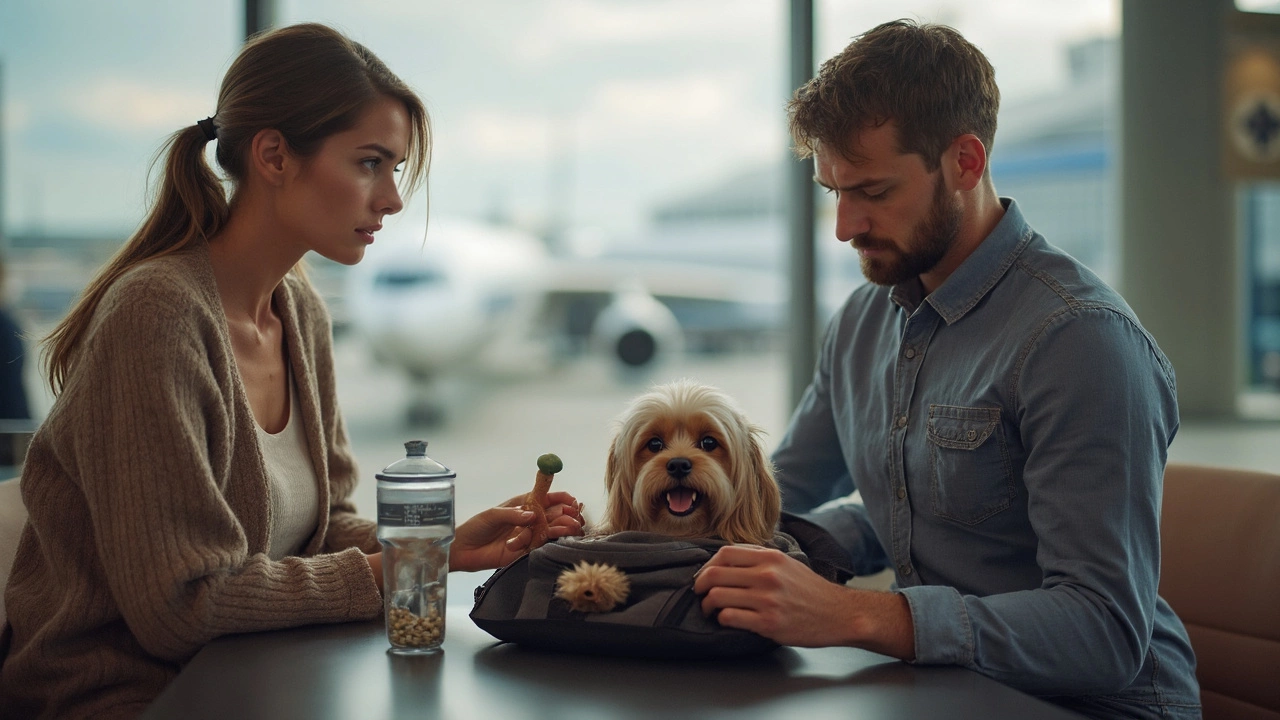Dog Flight Preparation: What You Need to Do Before Take‑off
Getting a dog on a plane can feel like a big project, but with the right steps it’s doable. Start by checking the airline’s pet policy early – some only allow pets in the cabin, others require cargo. Knowing the rules saves time and avoids surprises at the airport.
Health Checks and Paperwork
Book a vet visit at least a week before your flight. Ask for a health certificate that meets the airline’s timeframe (usually 10 days). While you’re there, update vaccinations and ask about a mild sedative if your dog gets anxious. Keep the certificate, vaccination record, and any import permits in a folder you can pull out quickly.
Choosing the Right Crate
The crate is your dog’s safe space in the sky. It has to be airline‑approved, sturdy, and big enough for your dog to stand, turn around, and lie down. Measure your pup from nose to tail and add a few inches. Line the bottom with a familiar blanket to calm nerves and absorb any accidents.
Label the crate clearly with your name, phone number, and a ‘Live Animal’ sticker. Put a copy of the health certificate in a zip‑lock bag attached to the outside. This way staff can see the paperwork without opening the crate.
Feeding before a flight is a balancing act. Give a small meal about four hours before departure to avoid nausea, then offer fresh water up until the last minute. Avoid treats or new foods that could upset the stomach.
Exercise your dog right before you head to the airport. A tired pup is calmer in the carrier and less likely to bark or whine. A 15‑minute walk or a quick game of fetch does the trick.
When you reach the airport, arrive early – at least two hours for domestic, three for international flights. This extra time lets you handle check‑in, security, and any last‑minute questions without rushing.
At security, you’ll be asked to remove your dog from the crate. Keep the leash short and the pet calm. Let the crate go through the X‑ray while you walk your dog through the metal detector.
If you’re flying cabin‑side, pick a seat with a little extra legroom and ask the flight crew to help you stow the crate safely under the seat. Keep the carrier upright and avoid opening it during the flight.
For cargo flights, confirm the temperature range and handling procedures. Ask the airline if they have a pet‑relief area on the tarmac and plan a quick potty break before boarding.
After landing, wait until the plane has fully stopped and the crew says it’s okay to retrieve the crate. Open it slowly, talk to your dog in a calm voice, and let them stretch before you head out.
With a clear health check, the right crate, proper feeding, and a calm pre‑flight routine, you’ll turn a scary experience into a smooth journey. Your dog will thank you with wagging tails on the other side of the runway.
What to Give a Dog Before a Flight: The Real Pet Travel Checklist
Flying with your dog can be stressful if you don't know how to prepare. This article covers what you can safely give your dog before a flight, including food, water, medication, and calming aids. Get practical tips on timing meals, preventing accidents, and what products to avoid. Learn how to keep your pup healthy and calm, whether they're in the cabin or cargo. Discover what's best for your unique furry friend before you ever step on a plane.
